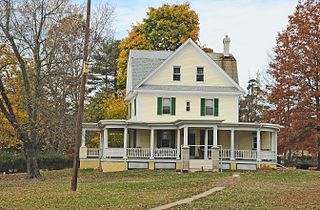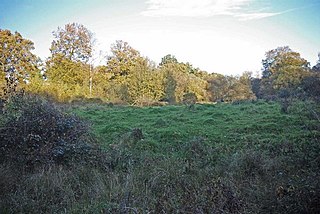
Hatfield is a town and civil parish in Hertfordshire, England, in the borough of Welwyn Hatfield. It had a population of 29,616 in 2001, and 39,201 at the 2011 Census. The settlement is of Saxon origin. Hatfield House, home of the Marquess of Salisbury, forms the nucleus of the old town. From the 1930s when de Havilland opened a factory until the 1990s when British Aerospace closed it, aircraft design and manufacture employed more people there than any other industry. Hatfield was one of the post-war New Towns built around London and has much modernist architecture from the period. The University of Hertfordshire is based there.

Hatfield House is a country house set in a large park, the Great Park, on the eastern side of the town of Hatfield, Hertfordshire, England. The present Jacobean house, a leading example of the prodigy house, was built in 1611 by Robert Cecil, 1st Earl of Salisbury and Chief Minister to King James I, and has been the home of the Cecil family ever since. It is a prime example of Jacobean architecture. The estate includes extensive grounds and surviving parts of an earlier palace. The house, currently the home of Robert Gascoyne-Cecil, 7th Marquess of Salisbury, is open to the public.

Hatfield is a borough in Montgomery County, Pennsylvania, United States. The population was 3,290 at the time of the 2010 census. It is part of the North Penn Valley region that is centered around the borough of Lansdale. The borough is surrounded by Hatfield Township.

Hatfield Township is a township in Montgomery County, Pennsylvania, United States. The population was 17,249 at the 2010 census. It is part of the North Penn Valley region that is centered around the borough of Lansdale.

Cuffley railway station serves the village of Cuffley in the Welwyn Hatfield district of Hertfordshire. It also serves other nearby settlements, namely Goffs Oak, Northaw and the west of Cheshunt. It is 13 miles 17 chains (21.26 km) down the line from London King's Cross on the Hertford Loop Line.

Little Hallingbury is a small village and a civil parish in the Uttlesford district of Essex, England.
Broad Oak or Broadoak may refer to one of several places in Great Britain or the United States:

Hatfield Broad Oak is a village and civil parish in the Uttlesford district of Essex, England. The village is approximately 5 miles (8 km) south-east of Bishop's Stortford. Near the church of St Mary the Virgin is former Benedictine priory Hatfield Regis Priory.

Hatfield Broad Oak Priory, or Hatfield Regis Priory, is a former Benedictine priory in Hatfield Broad Oak, Essex, England. Founded by 1139, it was dissolved in 1536 as part of Henry VIII's dissolution of the monasteries.

Hatfield Heath is a village, civil parish, and an electoral ward in the Uttlesford district of Essex, England, and at its west is close to the border with Hertfordshire. In close proximity are the towns of Bishop's Stortford and Sawbridgeworth. Stansted Airport is approximately 5 miles (8 km) to the north.

Sir Francis Barrington, 1st Baronet of Barrington Hall, Essex was a Puritan activist and politician, who was MP for Essex from 1601 to 1604, then 1620 to 1628.
Sir William Masham, 1st Baronet was an English politician who sat in the House of Commons variously between 1624 and 1655.

Portingbury Hills or Portingbury Rings is a hill in Hatfield Forest, Hatfield Broad Oak, Essex, United Kingdom.
Regis, Latin for "of the king", occurs in numerous English place names. The name usually recalls the historical ownership of lands or manors by the Crown. In other places it honours royal associations rather than ownership. The "Regis" form was often used in the past as an alternative form to "King's", for instance at King's Bromley and King's Lynn.
Thomas Priour, of Hatfield Broad Oak, Essex and Westley Waterless, Cambridgeshire, was an English politician.

Pincey Brook is a watercourse in the Uttlesford and Epping Forest districts of Essex, England, and is a tributary to the River Stort.

Newman's End is a hamlet in the civil parish of Matching, and the Epping Forest district of Essex, England.

Barrington Hall, also known as the Manor of Hatfield Broad Oak in earlier centuries, is an 18th-century English country house in the village of Hatfield Broad Oak, Essex, UK. The hall is built in red brick in both two and three storeys with a balustraded parapet. There are a number of ornamental shaped Dutch gables. The south front of the house has a central block with a centrepiece with carved figures.

Queen Elizabeth's Oak was a tree in the grounds of Hatfield House, Hertfordshire, England. Elizabeth I is said to have been sitting beneath the tree when she was told of her accession to the throne in 1558. The tree was visited by Queen Victoria and Albert in 1846 and they were presented with a branch and an acorn from it as a memento. The tree had deteriorated by the early 20th century and its remains were removed in 1978. A replacement oak was planted on the site by Elizabeth II in 1985.















